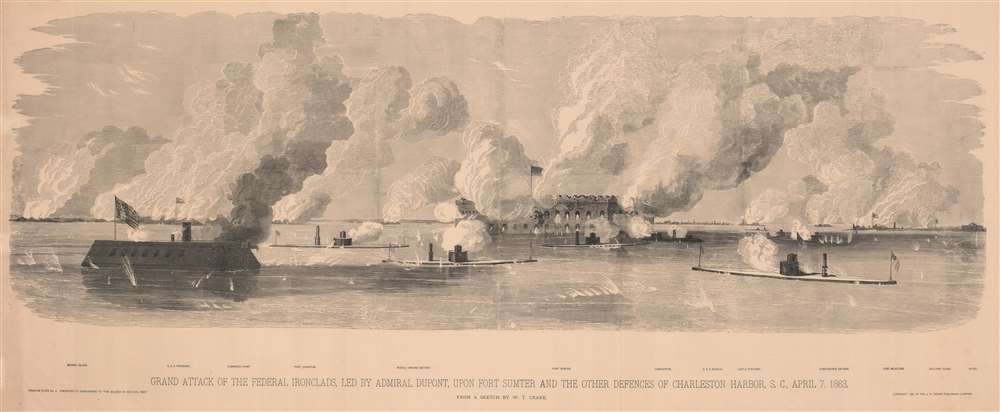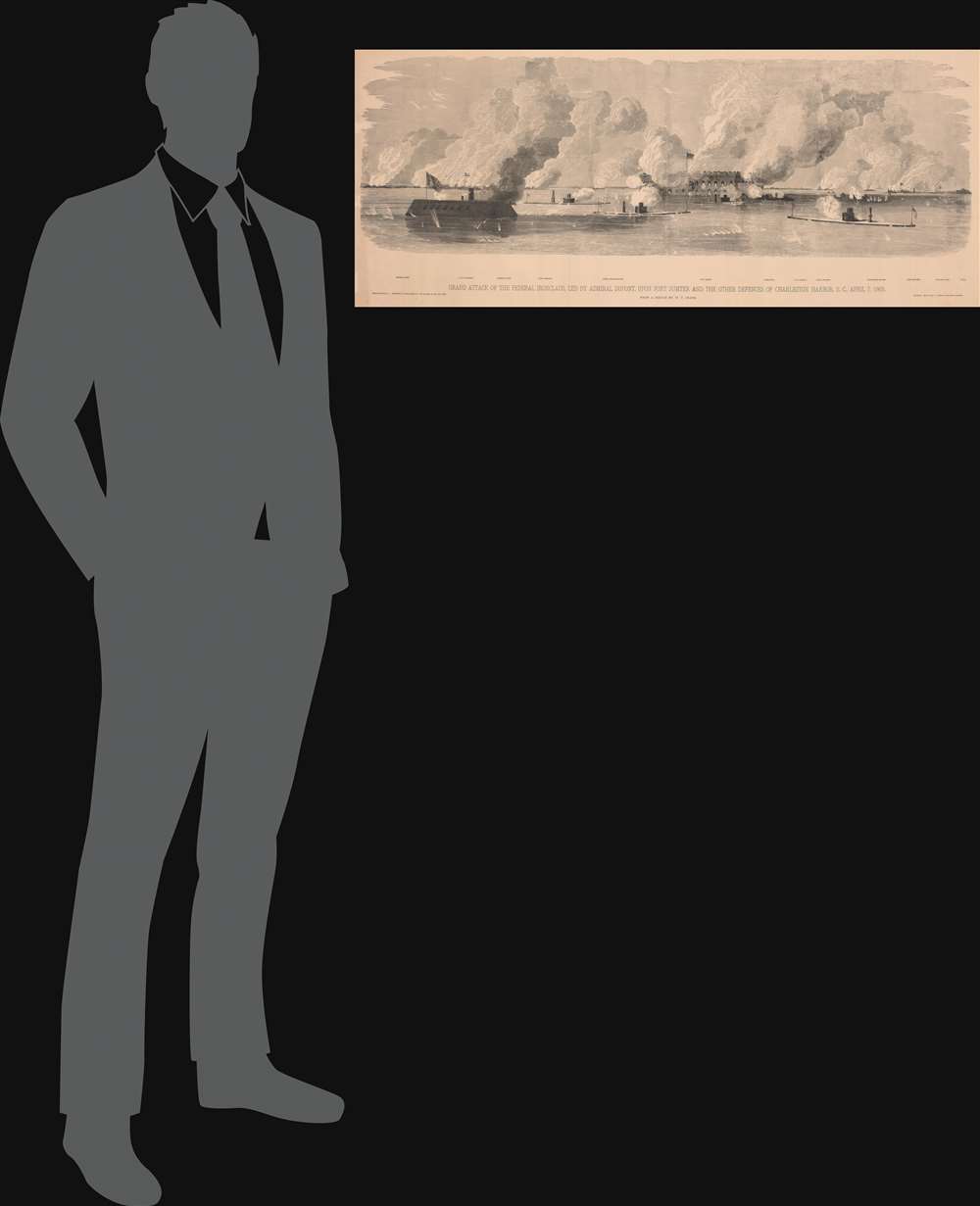1885 J. H. Brown View of Union Attack on Fort Sumter, U.S. Civil War
FederalIronclads-crane-1885
Title
1885 (dated) 17.25 x 43 in (43.815 x 109.22 cm)
Description
A Closer Look
7 of the 9 ironclads involved appear (although only U.S.S. Ironsides and U.S.S. Keokuk are labeled) with gunpowder billowing from their guns. Fort Sumter dominates the center, with gun flashes emanating from every window. Splashes caused by incoming artillery fire spray all the Union ships (all flying American flags) with Charleston and other Confederate fortifications in the distance.The First Battle of Charleston Harbor
The First Battle of Charleston Harbor took place on April 7, 1863. 9 Union Navy ironclad warships attacked Confederate defenses near the entrance to Charleston Harbor, including Fort Sumter. After a series of setbacks and other difficulties, the Union force fired on Confederate defenses for less than two hours and did little damage, all of which was easily repaired. Unable to breach the first line of harbor defenses, the Union force withdrew. They suffered heavy incoming fire during the attack, which damaged all ships involved and sunk one. Admiral Samuel Francis Du Pont intended to renew the attack the following day. However, after consulting with his captains, Du Pont decided that the damage done to the fleet, combined with the harbor's defenses, left little chance of victory and decided to withdraw.Publication History and Census
This view was created from a sketch drawn by William T. Crane and published in 1885 by the J. H. Brown Publishing Company as Premium Plate No. 4 for subscribers to The Soldier in Our Civil War. Extremely rare. We note a single cataloged example in OCLC at the American Antiquarian Society. A second known example is held by the Library of Congress.Cartographer
William T. Crane (1832 - July 14, 1865) was an American artist. Born in Portsmouth, New Hampshire, Crane was interested in drawing from an early age. During the U.S. Civil, War, Crane worked as a 'Special Artist' for Frank Leslie's Illustrated Newspaper (Leslie's) and created drawings and sketches of battles and other Civil War-related scenes for the newspaper. He produced a prodigious volume of work while following the Union Army through North Carolina, South Carolina, Georgia, and Florida, most of which were 'on-scene war drawings' which were then turned into line engravings for Leslie's. His work was also published in the two-volume special edition pictorial history of the American Civil War, The Soldier in Our Civil War, which contained many Leslie's illustrations. Crane died at the National Hotel in Washington, D.C., on July 14, 1865, of throat disease. He was in D.C. covering current events, including drawing sketches of the execution of the conspirators that murdered President Abraham Lincoln. Leslie's obituary for Crane praised his ability to draw truthful sketches, many of which captured important events of the war. The obituary also lauded his devotion to his parents and his brother. Very little else is known about Crane's short life. More by this mapmaker...




